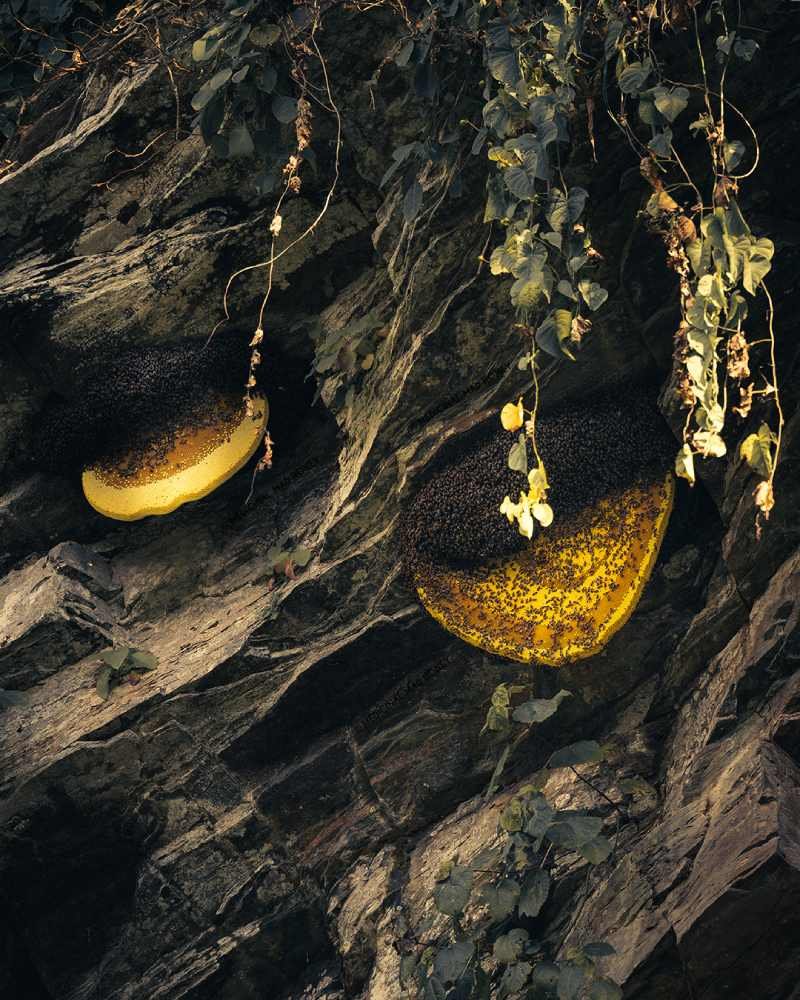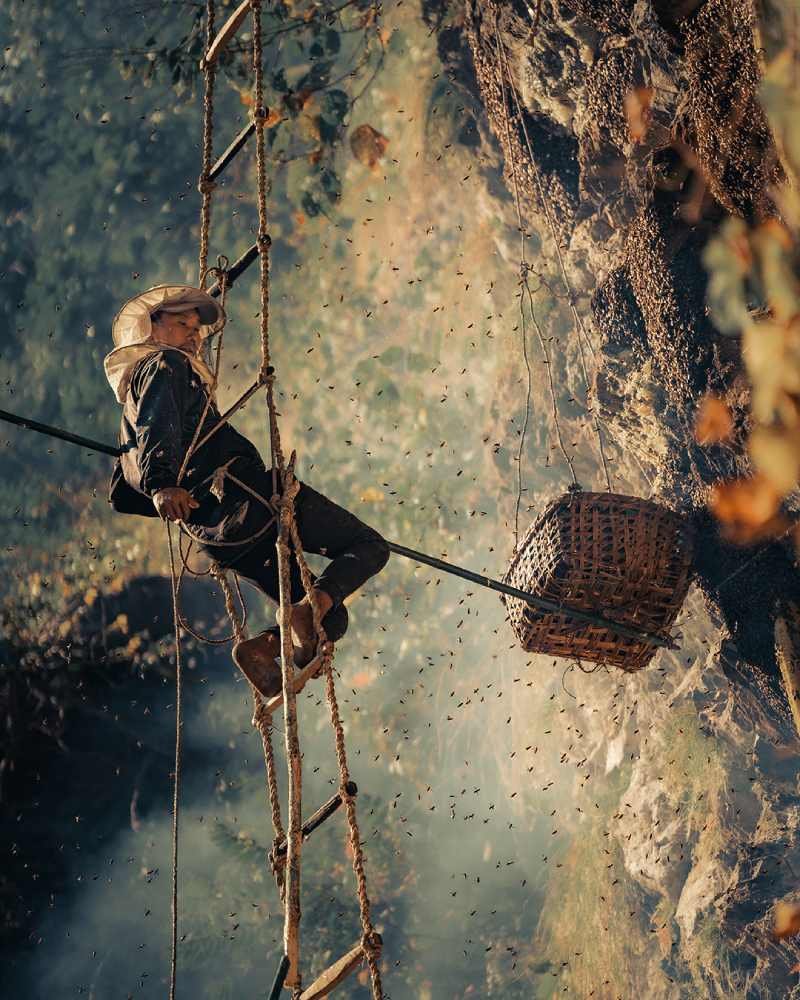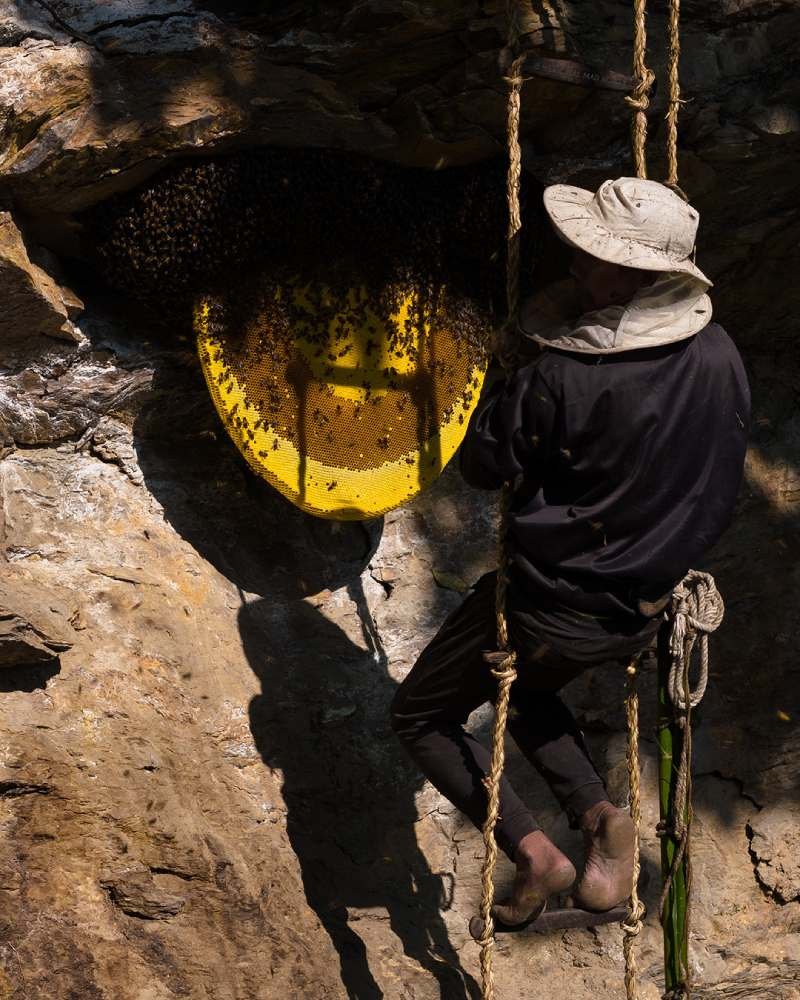Honey is a natural sweet substance produced by bees. Besides regular honey we’ve been consuming, there are unique honey types that are also made from the nectar of flowers renowned for their distinct properties.
Mad honey is one such exceptional variety. What makes it unique from regular honey is its composition- it is derived from the nectar of Rhododendron flowers that contain grayanotoxins, giving it psychedelic properties. Found mainly in the high Himalayan regions of Nepal and parts of Turkey, mad honey stands out not only for its rarity but also for its remarkable medicinal and mind-altering characteristics.
Origin and Source
The species of bees that make these two types of honey vary. Regular honey is made by common honeybees cosmopolitan in nature (Apis mellifera, Apis cerana, etc.), consuming various types of flowers. Due to worldwide production, there is no real limitation in the supply of regular honey.

The production of mad honey is however limited to the high altitudes. Apis laboriosa / Himalayan giant honeybee found above 2000 meters prepares this honey in the wild. Nepal and Turkey are some common countries known for producing this rare honey. The harvest season is also limited, making mad honey precious on the market.
Composition and Active Compounds
Both the types of honey have flower sugars, water, amino acids, vitamins, minerals and antioxidants all of which make honey have a sweet taste, have the nutritional value and health benefits. The specified ingredients can be found in almost all natural honey and the natural balance offers energy, antioxidants, and well-being promotion associated with honey consumption.

Mad honey in contrast to normal honey is characterized by the existence of grayanotoxins, naturally occurring elements found in the nectar of Rhododendron flowers. This compound is what makes mad honey have a psychedelic effect on the users, so they experience a feeling of euphoria and lightheadedness. The honey also has medicinal qualities for which it was historically used by the Himalayan people, as a supplement that aids overall vitality. The composition of mad honey makes it both a natural delicacy and a functional substance influencing body and mind, unlike regular honey, which exists primarily as a sweetener.
Taste, Texture, and Appearance
Regular honey: This one is usually smooth, sweet and thick. It will have a taste that depends on the flowers that the bees visit and generally it is on mild, floral, or fruity. The color typically varies between a pale gold and very dark amber and its texture is very pourable and spreadable.

Mad honey: More complex in taste – bitter, floral and with some warming effect. Its flavor is influenced by distinct Rhododendron nectar, reminiscent of deep and earthy flavors that you won’t find in ordinary honey. The color may vary between dark amber and reddish brown, and usually it is thicker and more viscous than ordinary honey, because of the natural conditions and the way it is harvested. The special taste is accompanied by the psychoactive effects, and every bite is a more interesting experience.
Effects and Uses
Regular honey: This is consumed as a natural sweetener or as a general supplement to boost immunity, improve antioxidants level, and soothe sore throats. It is safe to take on a daily basis and is appropriate for both young and grown-up people (except infants under 1 year).
Mad honey: Psychoactive and medicinal. Even low doses may cause light euphoria, warmth, slight dizziness and energy. It has traditionally been used by Himalayan communities as medicine to relieve digestive and circulatory problems as well as being used ritually or ceremonially. Its effects are dose sensitive such that on excessive use it may lead to nausea, low blood pressure or more intoxication-like effects.
Safety and Consumption
There is no any limitation to the consumption of normal honey however mad honey must be consumed under limitation. One teaspoon a day is considered an appropriate dose, going beyond that can lead to dizziness, nausea, low blood pressure, or more serious complications. There are also restrictions related to certain populations, mad honey is not considered safe for children less than 18 years of age and pregnant women.

Cultural and Economic Significance
Mad honey is a cultural resource to the people of the Himalayan region particularly the Gurung people of Nepal, who have been practicing honey hunting over centuries. It is a high-value product economically due to its rarity and exclusive characteristics in the local and global markets. Ordinary honey, though more frequently used, has no equal cultural or economic significance.
Conclusion
Mad honey hence is unique because of its origin only in high altitudes and different kinds of effects related to the presence of grayanotoxins. The flavor is sweet, same as regular honey, but the intriguing blend of medicinal and psychoactive effects is what makes it a must-try for people looking for something rare and adventurous. This nature’s wildest honey is best enjoyed in small, occasional doses and provides a one-of-a-kind encounter with both flavor and tradition.




